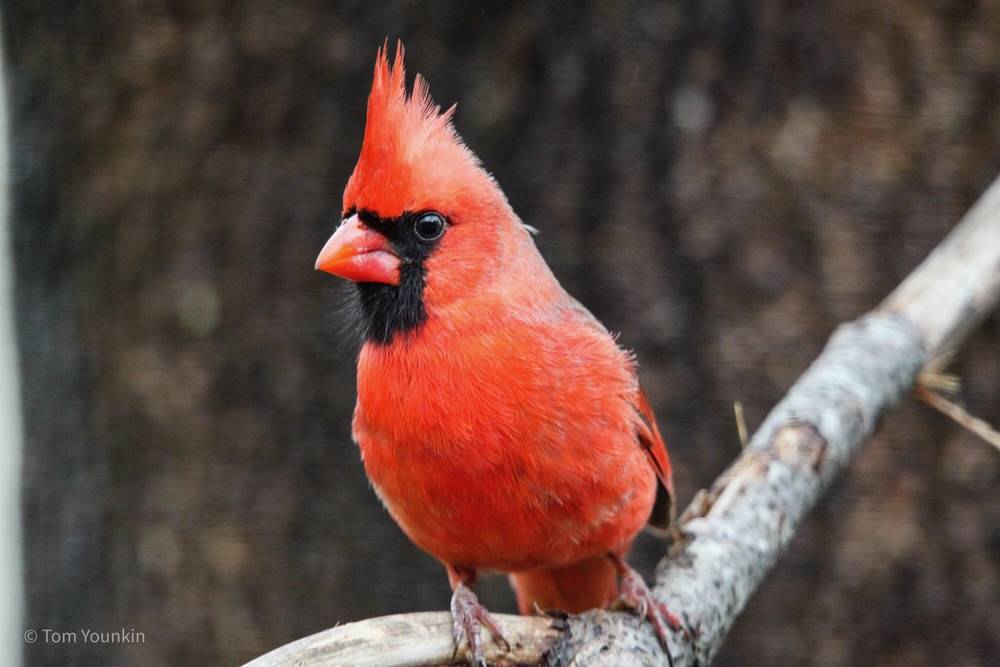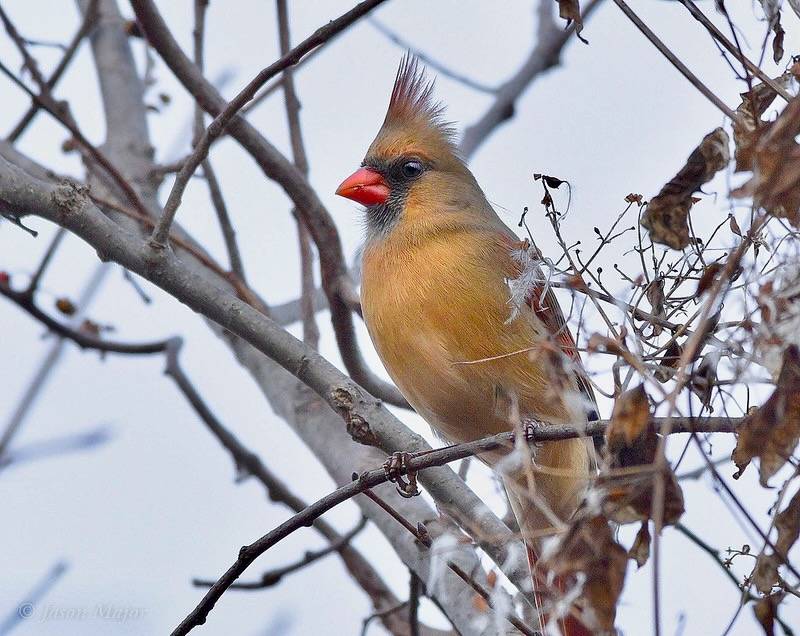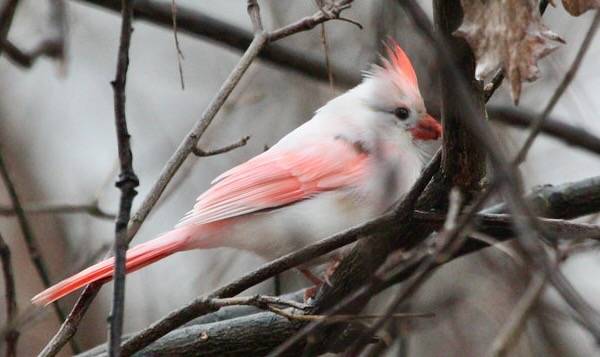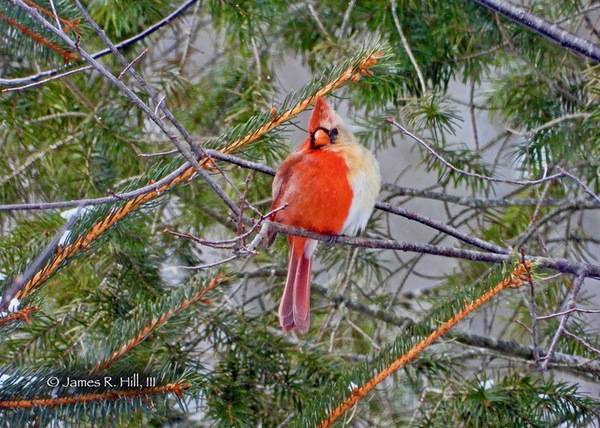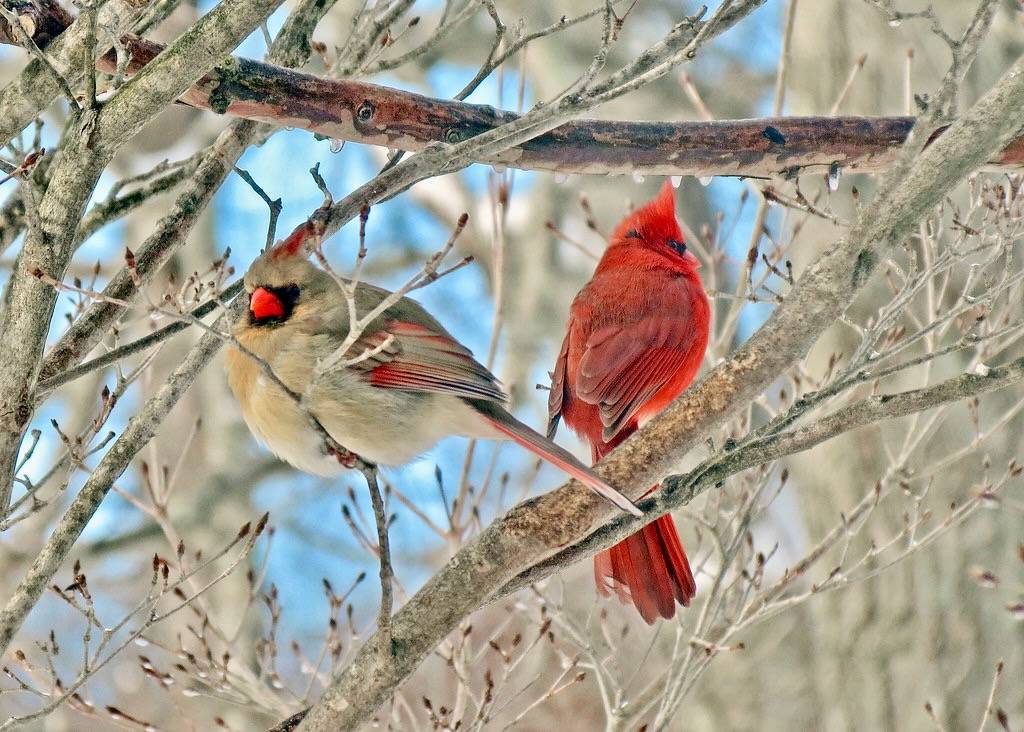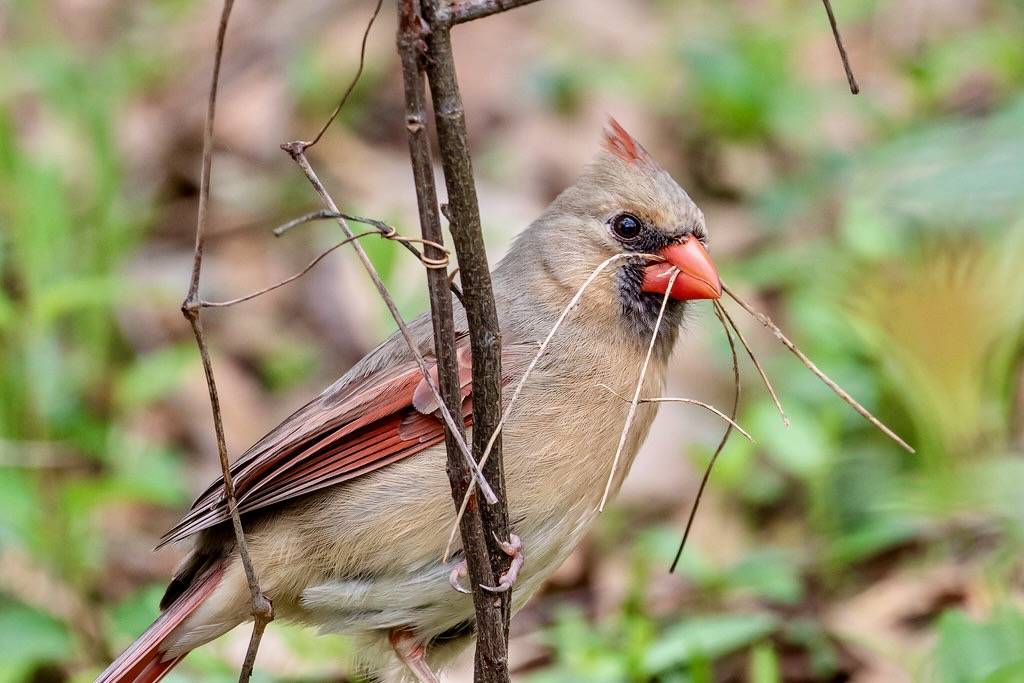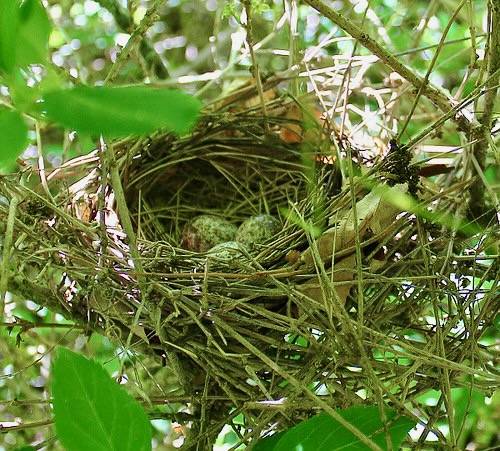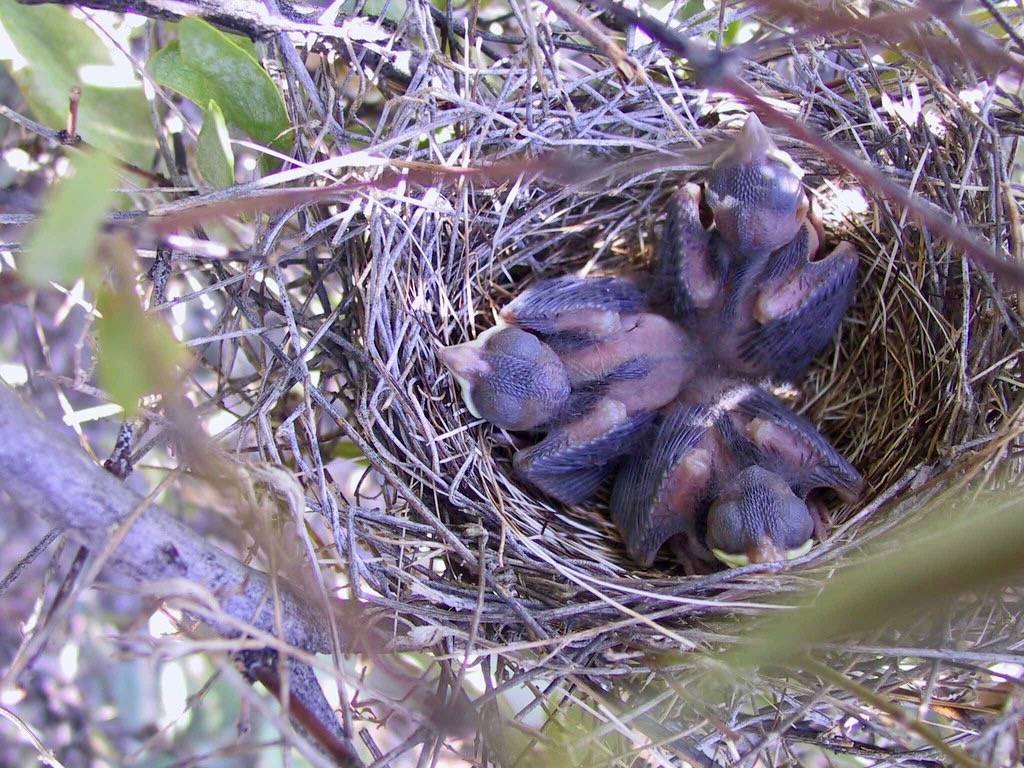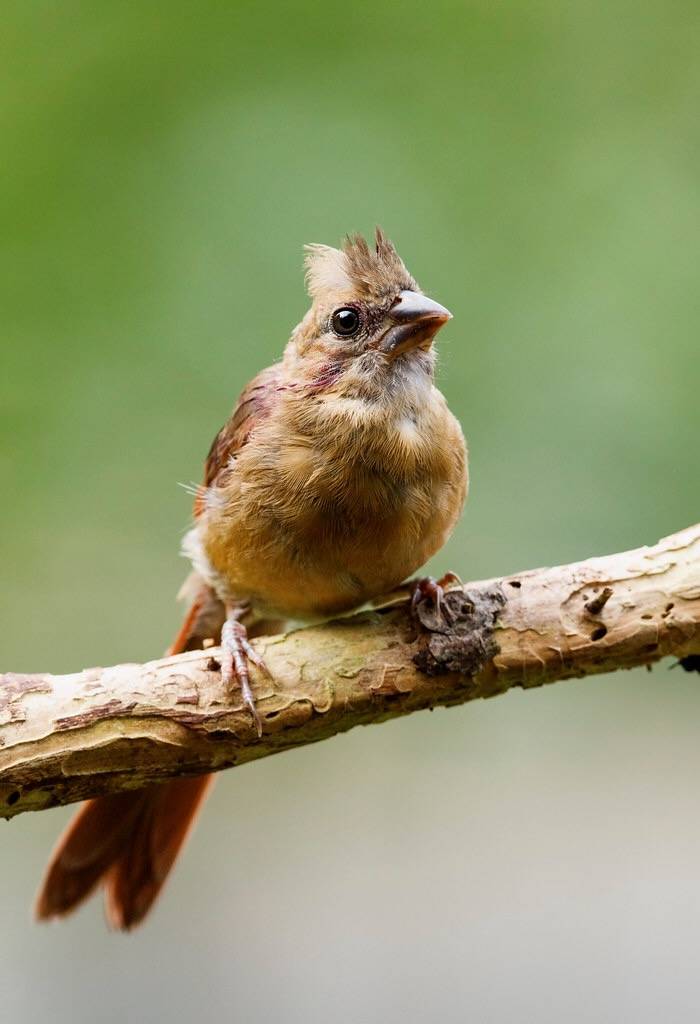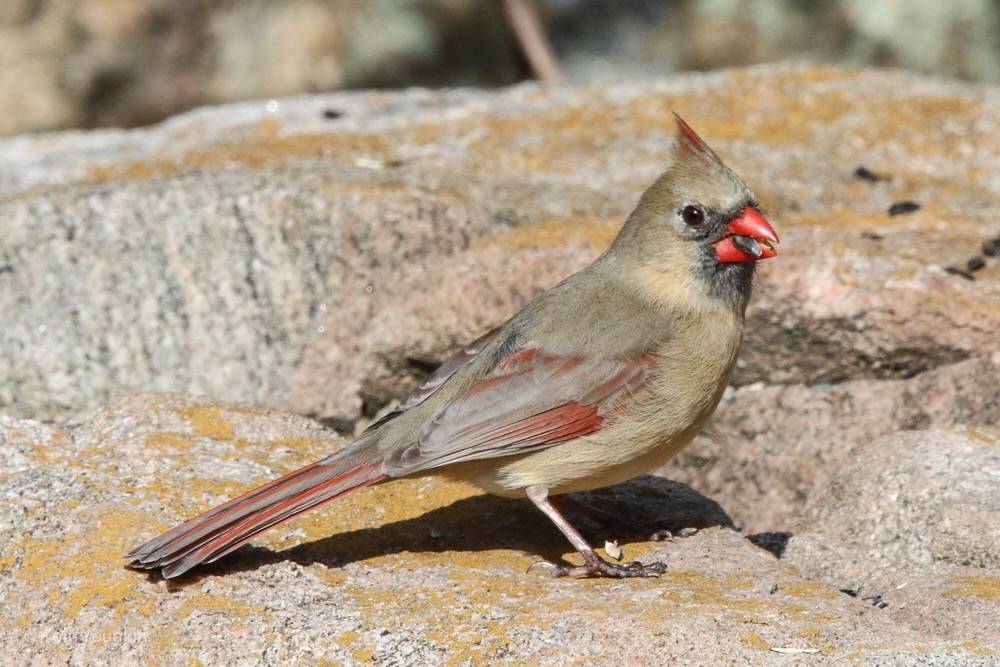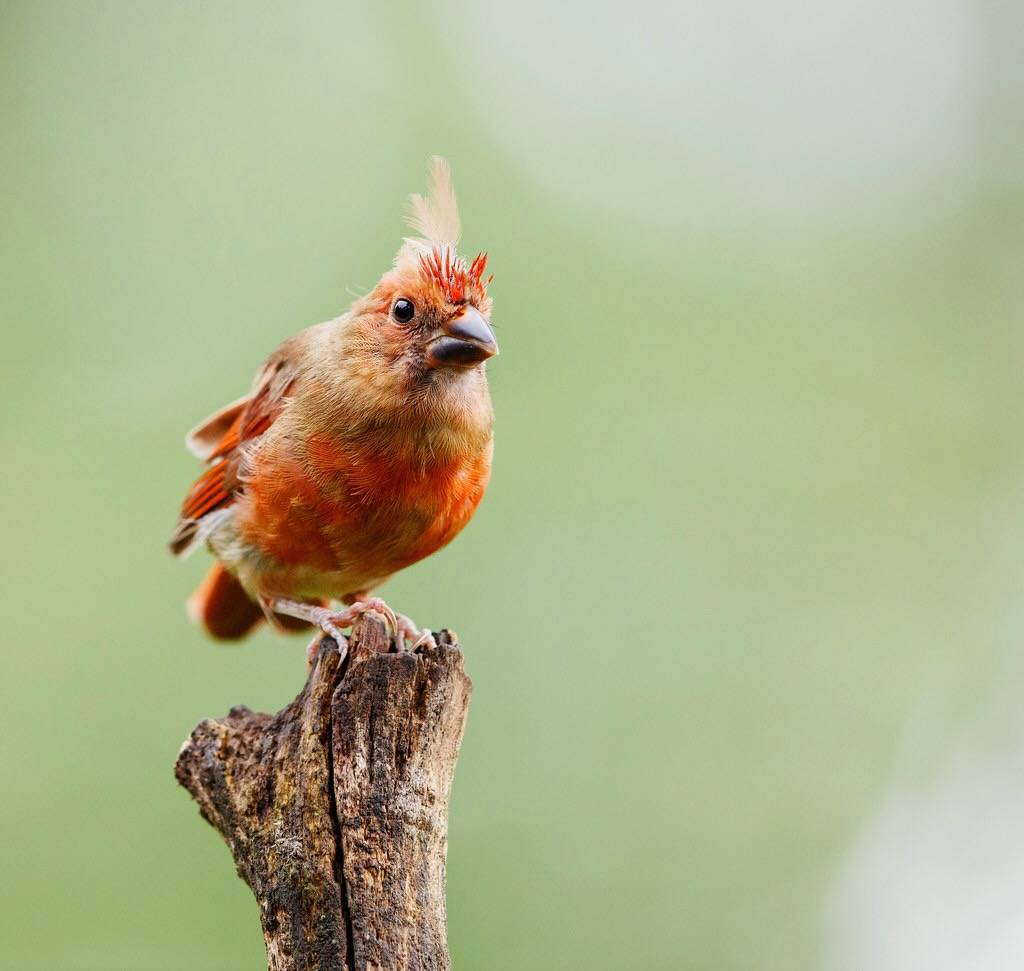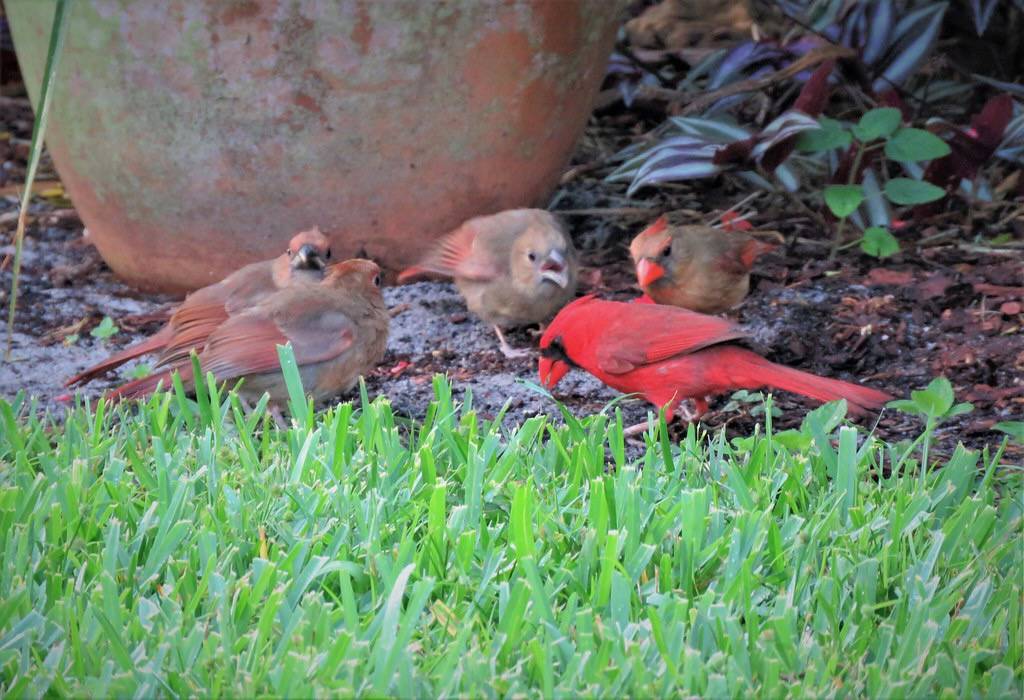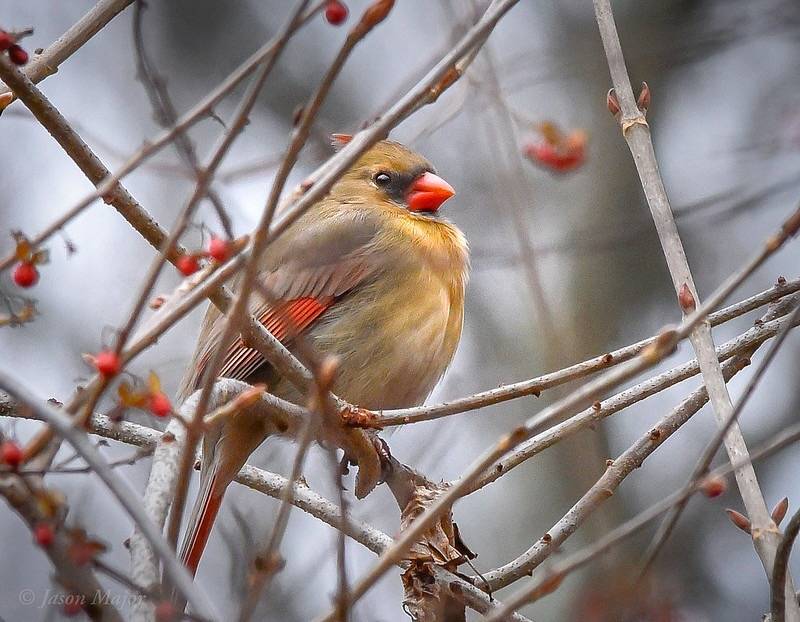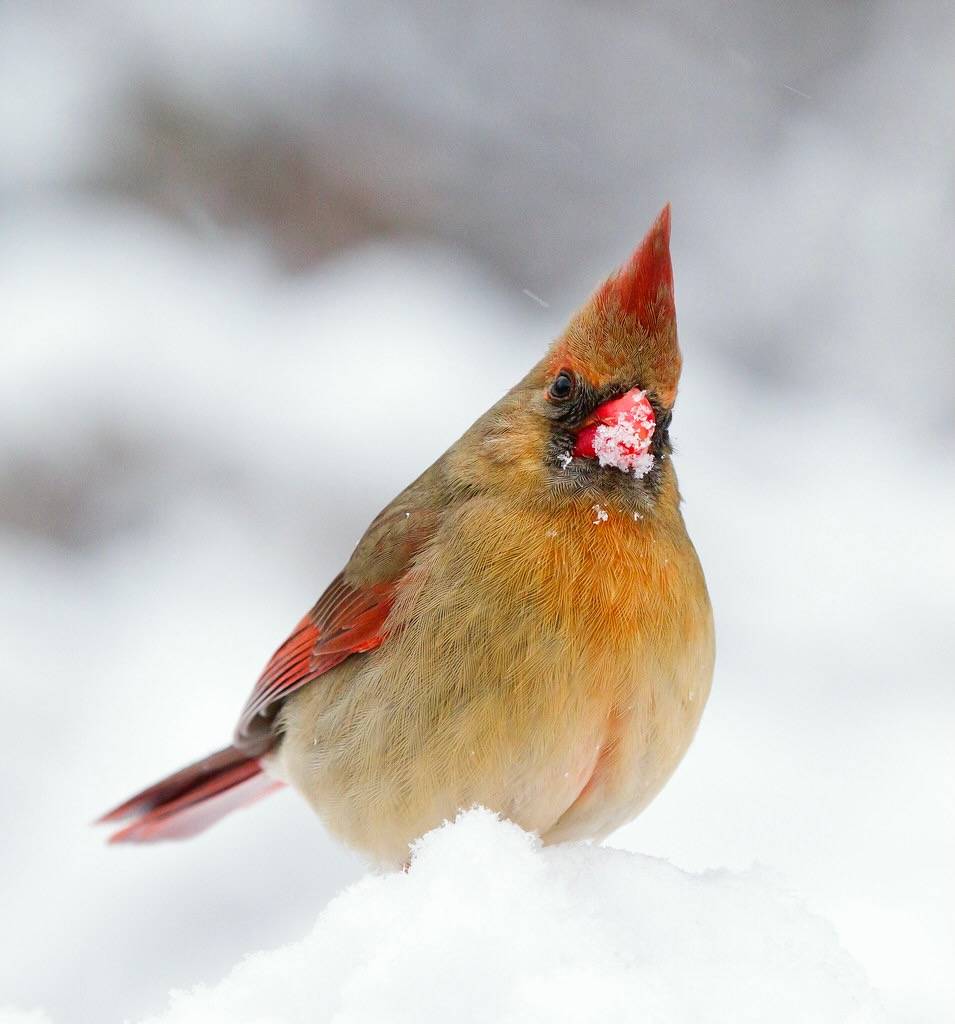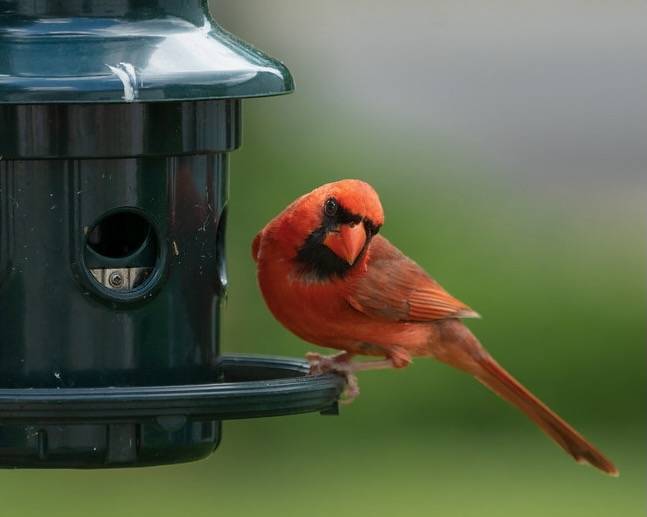Northern Cardinal
The Northern Cardinal is present year round at Salter Grove. However, because it prefers to be in dense shrubbery, it is often hard to see except when the brilliant red male is singing from an exposed tree branch. Males and females can be heard singing to each other in early spring throughout the park. Pairs can be also be seen flitting through the dense understory vegetation along Audubon, Pond and Upland Trails.
Its common name is derived from the male's vibrant plumage which calls to mind the brilliant red vestments of cardinals in the Roman Catholic Church. Although now called the Northern Cardinal, its range was limited to the southern United States up until the 20th century. The combination of a warming climate, extensive landscaped suburban development, and the widespread practice of setting food out for birds during the winter has encouraged the northward expansion of this non-migratory species.
Northern Cardinals get the red in their plumage from the fruits they eat, ones that contain carotene, the chemical that is also in carrots. Because they are common, and the male plumage is so distinct from the female plumage, any genetic anomalies that occur are quickly noticed. There have been reports and photographs of nearly white leucistic birds and even birds with half male and half female plumage. The latter is a condition called bilateral gynandromorphism and has been documented in birds and arthropods where affected individuals are divided down the middle into male and female halves.
Mated pairs often stay together through the winter and may continue to breed together in successive years. Courtship behavior in which the male feeds the female beak-to-beak strengthens the pair bond. Despite this apparent monogamy, however, DNA studies of two populations revealed that 9-35% of offspring were not fathered by the female's mate. The female alone builds the nest in dense shrubbery and incubates the eggs. Both parents feed the nestlings with insects and care for the fledged young.
The Northern Cardinal is such a favorite that it has been named the state bird in seven states: Illinois, Indiana, Kentucky, North Carolina, Ohio, Virginia, and West Virginia. It is also the mascot for numerous professional and university sport teams.
For more information:
https://www.allaboutbirds.org/guide/Northern_CardInsal
https://www.audubon.org/field-guide/bird/northern-cardinal
https://www.audubon.org/news/10-fun-facts-about-northern-cardinal
https://en.wikipedia.org/wiki/Northern_cardinal
http://www.biokids.umich.edu/critters/Cardinalis_cardinalis/
https://www.birdsbybent.com/////ch31-40/cardinal.html
https://ebird.org/checklist/S82061849
https://www.naturalhistorymag.com/features/243168/gynandromorphism#:~:text=Gynandromorphs


